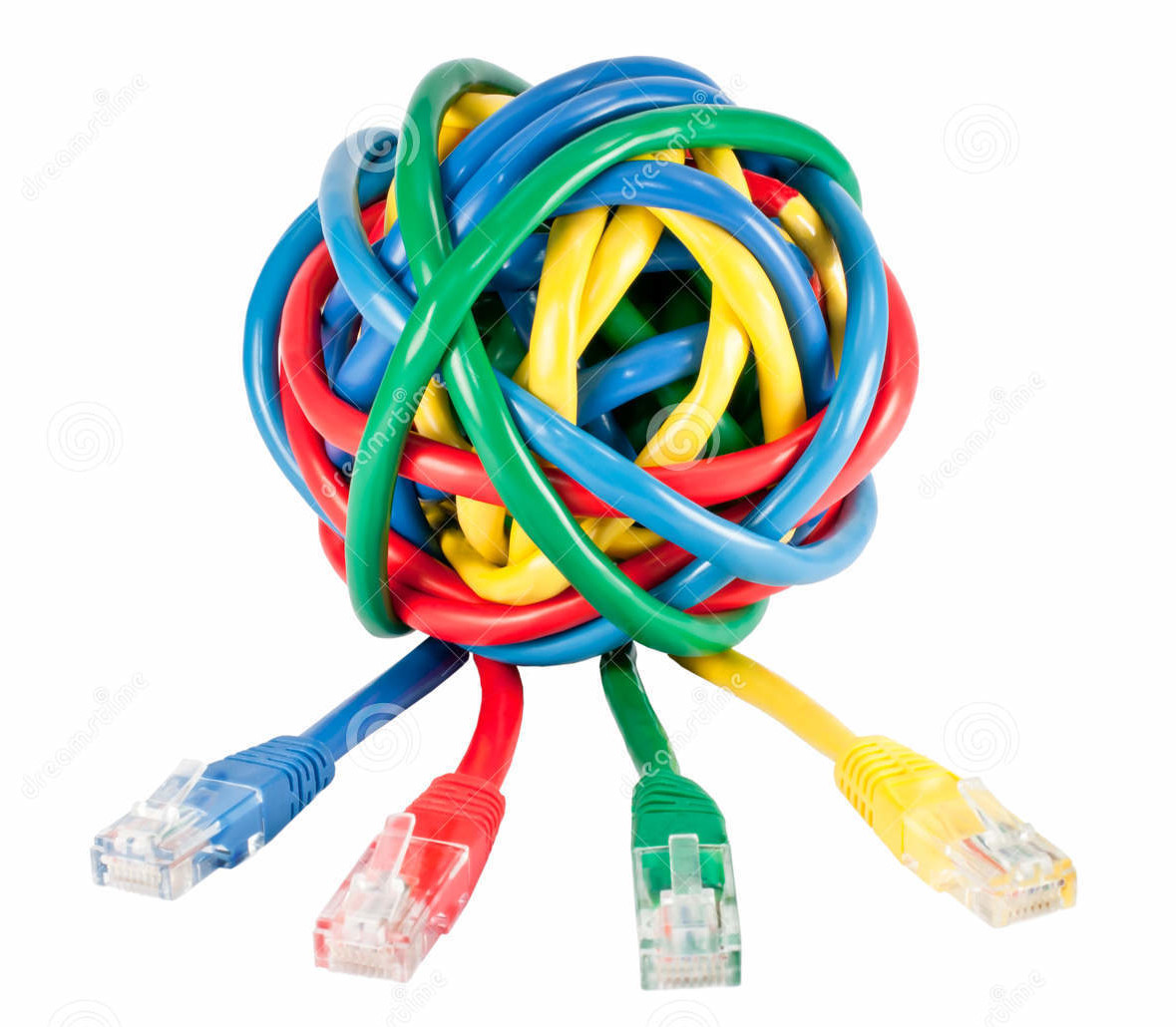I recently had CAT6 network cabling run under my house and thus, the intent of this new article series is to share the experience and provide tips to others who are considering the effort.
An initial write-up of the first article led me to realise that the amount of material here deserves multiple articles, and thus the birth of this new Writing Serial has eventuated:
- Initial Decisions
- Design
- Installation (this article)
- Future Opportunities
This article focuses on the actual installation, and picks up where the first two started.
The installation experience was split into a number of stages. The first stage was the general DIY effort, which saw the initial wall holes and cabling threaded through. The first hole drilled was in the lounge. The location of this hole and future wall plate was predetermined by the existing surround sound speaker wall plate. Whilst not ideal, since this was a DIY approach and effort, I next drilled the central hole in the small room where ALL network cables would be threaded through. As a general approach, I was taking a top down approach to determining where on the various walls the holes should be first, before considering how to drill through the floor to get the cables below the house. In drilling the hole in the lounge room I made careful measurements and calculations to pinpoint where the corresponding hole needed to be drilled from under the house. A similar effort was made for the other central location in the small room where all six network cables would be threaded through.
Going under the house proved the biggest challenge overall. Once under the house, a greater appreciation of some of the unseen complexities revealed themselves. The first hole to be created from under the house was the main central location where all the cables would be threaded through. When measuring out the exact spot, and correctly identifying where the hole in the floorboard was required, it turned out that the spot I had picked was going to be too difficult to drill through; two short supports blocked access for the drill. Instead, we had to effectively start over and drill bottom up for this hole. Two super critical items of equipment required for this job are the drill and the “snake”, which is simply a flexible plastic pole which we used to thread through the two holes – wall and floor. Think of the “snake” as a giant threading needle, to which the network cables were secured to via electrical tape.
In this way, we slowly threaded each cable down via the lounge holes, under the house and then back up through the central holes into the small room. The length of cables I had bought from Jaycar Electronics was based on running the cable indirectly – like the two perpendicular sides of a triangle, instead of directly (which would be that third line of the triangle). The length of cable was just right since there was plenty of excess cable extending into each room. Initially, I tested out a wall plate design in the lounge where instead of jackstone connectors, a single wide hole with brush covers was trialled. This was later replaced.
Drilling the final holes in the two remaining walls was simplified by my designs and plans whereby the wall plates would actually be positioned directly opposite each other. Once one wall plate was drilled in one room, we inserted the drill into the wall and drilled through the other side to create the other room’s hole. The master bedroom was used as the basis for measurement since it gave us a clear understanding of where the external wall is located and the perpendicular internal wall where the hole had been drilled provided a direct length to measure. This distance was then used to guide the drilling of the final hole once back under the house. Threading the snake from one room, down under the house enabled us to get a fifth cable down. Before that cable was fully threaded through end to end, we reused the snake to quickly thread the final sixth cable down from the last room location. Having an existing cable running through the floor hole highlighted how tight these holes were, given we were attempting to thread a second cable simultaneously through the one opening.
This same problem presented itself when we attempted to thread the fifth and sixth cables through the central hole; the thickness of one cable with its pre-fitted cable head taped to the snake + the three existing lounge cables saw the snake get stuck. Further, the initial set of cables used was a recycle of existing CAT5 cables. These cables were actually thinner than the final CAT6 cables that I had them re-threaded with. We ended up having to use the drill more to widen the holes in the floorboards before the final threading effort was made. With all the CAT5 cables threaded through all wall holes, the first stage in the networking effort was close to completion.
More as an experiment, and since I had a crimping tool handy along with the necessary keystone parts, I had a go at crimping some of the CAT5 lounge cables and was able to successfully test internet access through them. The CAT6 cabling was acquired whilst the CAT5 cables remained temporarily threaded; the CAT5 cables having served a purpose for validating required lengths, Having had all CAT6 cables threaded and wired helped to ensure getting a professional electrician in for Stage 2 minimised the amount of labour required.
Whilst the electrician’s scope of work was slightly more than just the wall plating of the wired network, he did spend approximately an hour on crimping all the cables to the wall plate connectors across the four locations. Attaching the wall plates in each of the three node locations – lounge and bedrooms, we then ran end-to-end tests for each cable before assembling the final wall plate where all six cables were located. In the process of cutting the cables to length, the previous identification and distinction of each channel was mixed up and we had to spend a little bit of time to work them out again.
As part of finalising the job, we labelled the interior wall plate with port numbers; the sequence was left to right, top to bottom for the two locations where multiple cable ports were present. These pen markings were then covered up by the outer wall plate frame which snapped into place to provide the final polished look and feel. All up, the electrician was here half a day to complete the networking as well as two other jobs. The time taken for this wired network was probably two hours maximum.
Finishing the job for me also meant patching up the first hole in the small room which was closer to the wall edge. This hole had been drilled prior to the under-the-house exploration which revealed the inconvenient locality. To patch the hole, I recalled from a similar job many years ago, how other similar-sized holes were patched up in a plasterboard internal wall. Getting the lid of an ice cream container, I cut it to be slightly larger than the actual hole. Getting a large needle and string, I threaded the string through the middle of the cutout and knotted it on one side of the hole. After preparing the plaster mixture with the right proportion of water and powder mix, I pushed the plastic cut out through the hole whilst keeping a hold on the string. Keeping a firm hold on the string so that the plastic lid formed an enclosed space, I then scooped the plaster filler into the hole. After filling the lower half, I grabbed another piece cut off the ice cream tub lid to cover and stop the plaster filling from leaking out. Filling up the remainder of the hole with filler, I then held the string securely and in a perpendicular fashion to the wall to ensure the rear support was steady.
Leaving the filled hole to dry overnight, I slowly removed the plastic covering from the wall and cut the excess string that poked out. Finally, as part of preparing to paint the surface area, I sanded down the area to ensure a smooth surface. After applying three coats of paint the area now looks good as new. The key test which as succeeded was that an inspection of the area by independent people left them without a clue that there had once been a hole drilled in that space.
Separate CAT6 cables were purchased from MSY to connect all devices. Use of a cable organiser helps to keep the data traffic separated from the nearby power cabling. As part of these finishing touches, I added on cable clips to ensure that all CAT6 cables are not left dangling under the house. Use of a label printer also helped to ensure that all cables were clearly identifiable. Overall, whilst the main job and installation had been complete, these items of extra effort help to give the whole activity a professional completion to it. The network switch which distributes all cable/network ports can handle up to 16 ports so this initial rollout of six network ports is a good starting point.


1 comment
Comments are closed.